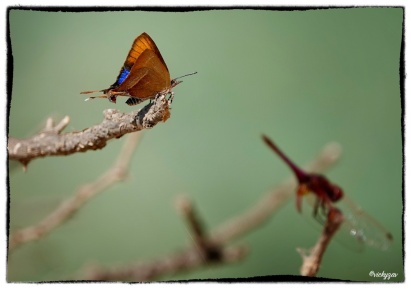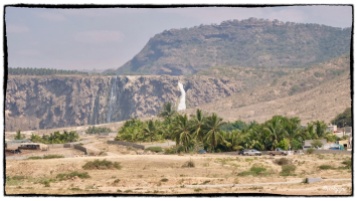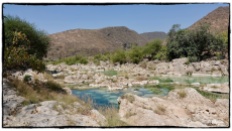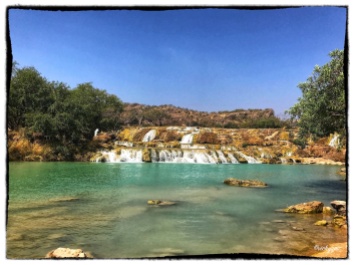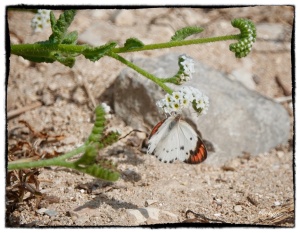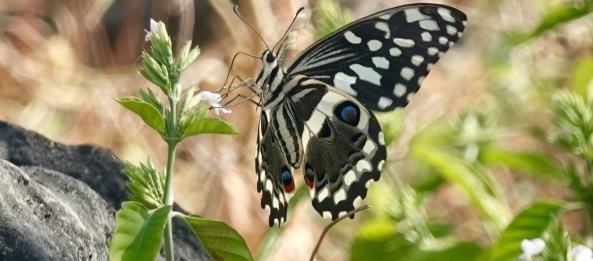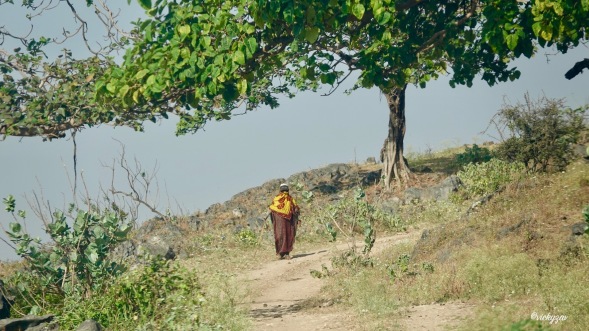The butterfly, Myrina silenus, (Fig Blue) is utterly striking once you catch a glimpse of it’s open wings.
My first and actually, only sighting of it was in late October 2019 when we were in butterfly heaven at Wadi Darbat, Dhofar, Southern Oman.
If you have read any of my preceding Oman butterfly diaries, you may have seen the beautiful waterfalls and scenery at Wadi Darbat, if not it’s worth a look at this post to see the landscape.
This small, vivid beauty was found in the lower level of Wadi Darbat on a single bush, which was full of these butterflies on that particular day, only. I returned several times during the week, but never saw them again. In retrospect, it was my lucky day!
Looking down from upper Wadi Darbat to the lower reaches. Note that the landscape looks quite burnt out, but once in the lower Wadi, it’s quite green.
I just had to include the biggest spider I have ever seen.
As I took the photo from the heights, my other half advised me to back off slowly and get my camera set up for a shot, without explaining what was hanging above my head… After a few seconds of a faster heart rate when I saw it, I calmed down to try to get the perfect shot!
After that “Oh my (insert expletive)” moment, we drove down to the lower reaches of the wadi and searched around, actually for dragonflies, but the bushes were full of butterflies and on one bush, right next to the water, I spotted a brown butterfly with an unusual shape…
I felt it was worth waiting for it to open its wings… I’m glad I waited, it was one of those “Ohhh, wow” moments…
Information on this butterfly is taken verbatim from the book “Butterflies of Oman” by Torben and Kiki Larsen.
This is a striking and absolutely unmistakable member of the Lycaenidae, which is found throughout Africa and Southern Arabia. Together with Coeliades anchises it is one of the most characteristic of the true African species which have managed to penetrate beyond Dhofar to Northern Oman. It has not been found in the Musandam peninsula, but may well occur since its food plants are plentiful there. Generally it is quite common except during the coldest part of the year in Northern Oman. As indicated by its vernacular name, the food plants are species of fig; experience in Africa shows that almost any species will do.
At least three species of Ficus are used in Dhofar. Adult butterflies are fond of sunning themselves on the leaves of the tree of their birth from where they fly off on brief sorties at great speed, often returning to the same perch. Flowers hold no strong attraction for silenus, but occasionally they will settle on ripe figs broken open by birds.
During my many Oman travels, I have only found this butterfly once in Wadi Darbat on a single bush, which doesn’t appear to be the case when the Larsens wrote their book in the 1980s. Maybe our world climate changes are affecting this species…











